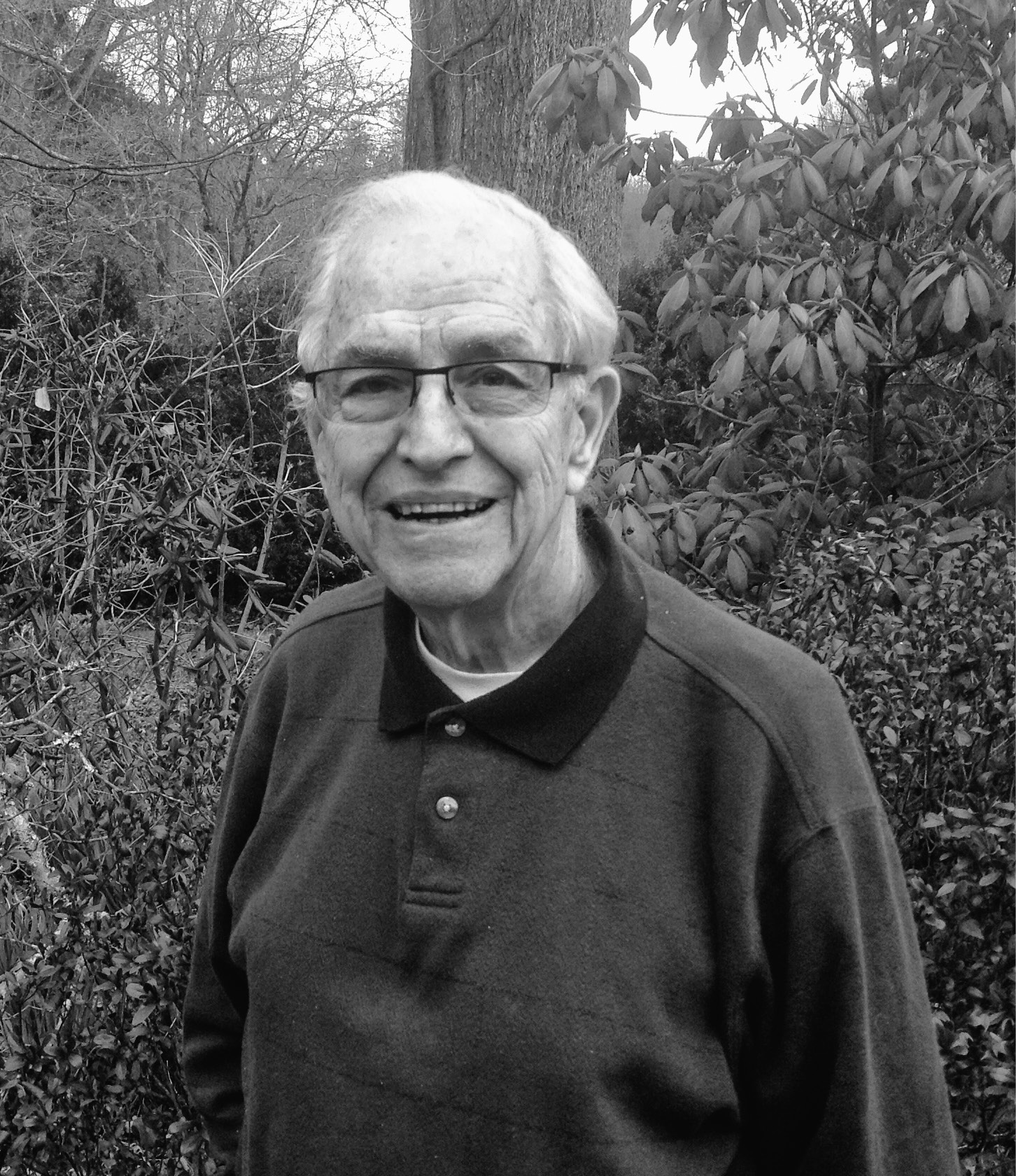Forming the Great Smoky Mountains National Park
The story of Glenn Cardwell of Pittman Center, Tennessee
GLENN CARDWELL says he’s like an old oak tree planted beside the river. He cannot be moved, at least not very far. Today, he could throw a rock from his front yard and ripple the Middle Prong of the Little Pigeon River, which also stays close to home, seemingly reluctant to flow outside of Sevier County in East Tennessee.
It was on the chilly Christmas Eve of 1930 that Roy Glenn Cardwell was born at home, a three-room house situated on Indian Creek inside a forest that would become part of the Great Smoky Mountains National Park. He and his family moved that year to get out of the park’s way. Some families moved to other states, several to Virginia, but the Cardwells ended up in a three-room frame house near what is today the Greenbrier entrance to the park. They were forced to move again in 1947. But they didn’t go far, just downstream to Pittman Center, on the border of the park, never again to lose their home to the government.
Glenn Cardwell, the eighth of the nine children of Bill and Pearlie Cardwell, was a child of nature, carefree and happy. While his father and siblings gathered with neighbors on the front porch to pick and sing, he was out with his mother roaming the ancient, hilly, remote forest of Greenbrier Cove, looking for herbs, bark, roots, and twigs, anything she could use to make teas or tonics or poultices for doctoring a sick child. He could hear the music in the distance, and he appreciated good mountain music, but he appreciated God’s creation even more.

PLATE 64 Glenn in third grade
Known for the diversity of its plant and animal life, the forest was his first schoolroom where, without knowing it, he was planting the seeds for a career.
Bill and Pearlie Cardwell were a study in contrasts. “I could sit with my mother all day,” Glenn Cardwell says, “and she wouldn’t give you a spoonful of words. She was a quiet, calm individual, but she was quick and swift to give advice, admonition, and discipline when needed. She always had her kids and other kids there.” If you asked her how she put up with a house full of children day after day, she would say, “Well, you just learn to tolerate certain things.”
Bill Cardwell, Glenn’s father, was a Bradley, on his mother’s side, and “they say the Bradleys are 99.9 percent mouth,” Glenn says. But he was who he was. “My father wouldn’t turn around twice to impress you. If you didn’t like him, that was your problem. ‘I like myself’ was his attitude.”
Glenn Cardwell says his father was an excellent musician and made his own instruments. He remembers a banjo his father made from the hide of a groundhog. When a cat chewed on it, he killed the cat and used its hide as a replacement. The sound, he decided, was just as good.
The average Greenbrier family didn’t need much money during those Depression years. People grew most of what they ate, and they could eat rabbit meat during any month spelled with an “r.” From the river came fish and turtles for the dinner table. The Cardwells always kept a couple of hogs, which they’d kill and put away with salt in the smokehouse, and they kept chickens in the spring and summer. Fried chicken was for Sunday when the preacher came over.
Trapping for hides brought in some money, but moonshine brought a better price. Herbs foraged from the forest were used for bartering. The Cardwells had a magazine explaining which herbs to gather, and once they had enough to trade, they’d take them to a local store, which in turn took them to Knoxville.

PLATE 65 Cardwell in the Navy
Glenn Cardwell knew in the first grade the girl he wanted to marry. Her name was Edith Faye Huskey. In the fifth grade, he knew the kind of job he wanted. He wanted to be a teacher. He didn’t know that a man could be a teacher until the fifth grade, where he had a male instructor. He was inspired.
Glenn was the only one of the Cardwell clan to attend college. After high school, he started classes at East Tennessee State University, but with the Korean War beginning, he joined the Navy in 1951 to avoid the draft. He received an honorable discharge four years later, in September 1955. But he didn’t wait four years to marry his sweetheart. He and Faye were wed on June 1, 1953, the very day she graduated from Berea College in Berea, Kentucky.
After his Navy stint ended, Glenn Cardwell went back to college, this time to the University of Tennessee in Knoxville, where he majored in business education. In 1958, he would become a teacher of accounting and history at Pittman Center, a position he kept for three years. He remembers well his first day of teaching. He got to the school early, and so did his most memorable student, a lad named Clarence.
“The thing is,” Clarence said, “since I’m having to repeat the seventh grade, I don’t think I should have to do all of your homework.” Cardwell replied, “I’m sorry, Clarence, but apparently you must not have done everything right, or you would not be repeating the seventh grade.” Said Clarence, “I can see I’m going to have trouble.” And then he added: “The second thing you should know about me is that I have a dad who likes to drink, and when he’s drinking, he wants to beat up on my mother. When that happens, I’ll be sleepy in class, so stay off my back.”
Turned out, the young man stayed awake at night when his father was drinking. He was there to protect his mother. For Christmas one year, Clarence thought his teacher should have a nice gift, so he gave him a pig’s tail, all wrapped up in a box. Glenn Cardwell still has it.
Besides teaching, Cardwell also served as the school’s guidance counselor. Then he took a federal service exam, which got his name listed on the federal registry for employment. Not long afterward, he received a postcard from the National Park Service: “If you are interested, please give us a call.”
At last, the career path that had taken root as he trailed his mother through the Greenbrier Forest, those days learning about herbs and plants in his “heaven on earth,” as he calls it, all of it was coming together for the perfect job. Glenn Cardwell was hired as a park ranger and would eventually become supervisor park ranger in charge of interpretation at Sugarlands Visitor Center, located on the doorstep of Gatlinburg, Tennessee. Although the government had twice taken his family’s home, he delighted in the work for thirty-four years.
Even his father wasn’t bitter about giving up his land to be preserved as a national park, one that sprawls out from East Tennessee to western North Carolina. He was just angry about losing his neighbors. You can buy a farm anywhere, he told his son during a visit to the park, “but you can’t buy neighbors back after they’re gone.”
As the chief interpreter, Glenn Cardwell got paid to tell stories, about the park and its beginnings, about the herbs and plants he gathered as a child, about the streams, about the wildlife, about the Great Smoky Mountains themselves.
“I never envisioned myself as a storyteller,” he says, but that’s often how he’s introduced as a speaker.
And if you sit a spell inside Glenn and Faye Cardwell’s comfortable riverside home in Pittman Center, you’ll know for sure that he deserves the title and more. In addition to being a storyteller, he’s also a fact-checker, an author who has written two books and is working on a third, a historian, an archivist, a leader, and even a humorist.
“Glenn has a scholar’s mind, a scientist’s technique, and the memory of an elephant,” Bill Landry writes in his book Appalachian Tales & Heartland Adventures. “We’ve gone to him for information about everything, from early knowledge of the people of Greenbrier to genealogy, botany, animals, and park trails. You name it, Glenn knows it.”
For starters, Cardwell likes to tell how the Great Smoky Mountains National Park came to be. He gives credit to a woman named Anne Davis, who returned home to East Tennessee after visiting a park out west and then asked her husband, “Why can’t we have a national park in the Great Smoky Mountains?” “Honey, I didn’t know you felt that way,” replied her husband, W. P. Davis, an executive of the Knoxville Iron Company.
So in December 1925, Davis called together a group of influential people, including bankers, AAA and chamber of commerce officials, and businessmen. That’s when the Great Smoky Mountains Conservation Association was born, an organization that became Tennessee’s godparent in establishing the Great Smoky Mountains National Park. North Carolina formed a similar organization.
A bill establishing the park passed Congress in May 1926, according to Cardwell, but purchasing the land, which initially was to be 700,000 acres, was left up to Tennessee and North Carolina. Once the states donated a minimum of 150,000 acres, Congress said, the federal government would accept the project for administrative purposes only. But when 300,000 acres had been acquired and turned over, then Congress would appropriate money for support and development. Several of W. P. Davis’s wealthy friends pledged support, but then went bankrupt during the Great Depression. Still, Davis insisted the park would be established. And it was, eventually.
“There’s no way under God’s heaven that this land could be bought today,” Cardwell says. Even the Knoxville City Council pitched in, despite the fact that the initial spot of land, 75,000 acres from the Little River Lumber Company, was in another county, Sevier. “That’s illegal,” he says. “It would not be feasible to take taxpayers’ money in a city and then go out beyond that city limits and do things like they did in the 1920s.”
But the city council did just that, promising a third of the money, provided the state of Tennessee came up with the rest. What started as a citizens’ movement now had a nucleus, 75,000 acres, and a marketing base on which to build. The Rockefeller family, who had helped with the Grand Teton National Park, offered five million dollars if Tennessee and North Carolina would match the gift with two and a half million each. “They did it,” Cardwell says. Even “children donated pennies.”
On June 15, 1934, after Tennessee and North Carolina turned over 300,000 acres to the federal government, Congress issued a charter establishing the Great Smoky Mountains National Park. That date is considered the park’s birthday, but the official dedication didn’t come until 1940, when President F. D. Roosevelt came down from Washington to speak.
Today, the park covers more than 500,000 acres, divided almost evenly between Tennessee and North Carolina. Attracting more than ten million visitors every year, it is one of the country’s most popular national parks.
But not every visitor appreciates the beauty and wonder of the park, Cardwell learned over the years. “You mean it’s just a bunch of trees?” some people ask, disappointed.
Cardwell says many tourists don’t know what to do in the park because they haven’t planned out their vacation. “The three greatest words besides ‘love,’ ” he says, “are ‘meditation,’ ‘preparation,’ and ‘execution.’ Many come here to execute their vacation without even knowing what to do.”
Since January 1960, Glenn and Faye Cardwell have lived in a brick house that Glenn, his brother Emert, and his father-in-law built alongside the Middle Prong of the Little Pigeon River in an area called Emerts Cove, part of Pittman Center. The Cardwells have one daughter, Sandra Yorke, who retired in 2015 as coordinator of work environment health and safety in Ithaca, New York.
“Most of the Cardwells were carpenters, but I missed out there, too,” Glenn Cardwell says. “But I can lay blocks.” So that was his job, laying block for his home, and the foundation for a life with Faye.
Practically everywhere Glenn Cardwell has lived, the Little Pigeon River has been there, about a tenth of a mile away from his two homes inside the park and now almost within spitting distance. It’s hard to tell if he is following the river or if the river is following him. The Middle Prong of the Little Pigeon begins inside Greenbrier Cove of the Great Smoky Mountains and joins other streams toward the Gulf of Mexico via the Tennessee, the Ohio, and the Mississippi Rivers.
“To me,” he says, “the river is the heart and soul of Emerts Cove and Pittman Center. We’re probably the only town in Tennessee that has a river that’s been declared one hundred percent pure by the Tennessee water quality people.”
Cardwell retired from the park service on September 30, 1995, but not because he was tired of the work. “Golly, yeah, I enjoyed the job,” he says. The park service offered him a buyout three times, and he finally accepted the third offer.
He was the last person born inside the park who ended up working for it. He never had to transfer, even though the man who hired him made it clear the National Park Service wanted supervisory employees to move out eventually and on to another assignment. “And he asked me if I would be willing to do that,” Cardwell says.
“I think you said the fastest no in history,” his former supervisor recalled years later. But there is virtue in continuity, the boss realized, and Glenn Cardwell was as continuous as they come.
So what does Cardwell do to stay busy, now that he has retired? He needed a project, and found one in politics. In 1998, he was elected mayor of Pittman Center, a town of 502 people, according to the 2010 census. “I didn’t intend to get into politics,” he says, “but that’s what happened.”

PLATE 66 Glenn at home
“This is the best little town in the Smokies,” Glenn Cardwell says proudly. And inside its schoolhouse is a museum, the Glenn Cardwell Heritage Museum. “That was the most embarrassing moment of my life,” Cardwell says, referring to the museum’s being named for him. “I do things because I want to do them, not for recognition.”
Modesty aside, the name Glenn Cardwell is a natural fit for the museum. Cardwell is indeed a history buff, one who not only has studied history but has also lived it. One reason he wrote two storytelling books, he says, is that his daughter requested them. “You’re going to get old,” she told him, “and I won’t know those stories, and I want to know them.”
It’s obvious to anyone who knows him, but Glenn Cardwell says it anyway: “I am a people person.” No doubt. Anyone who could put up with thousands of tourists every day, well, he’d either be a people person or, as Pearlie Cardwell said of all those kids who filled her house at suppertime, “you just learn to tolerate certain things.” Maybe it’s a little of both.
Glenn Cardwell was just a baby when his folks sold their place on Indian Creek to the government and moved for the first time. “They scattered us,” he says. His father wanted to move to Virginia with several of his neighbors, but with a newborn in the family, he figured he couldn’t travel that far away. So Glenn Cardwell’s birth was well-timed. Because of him, the family stayed in Greenbrier.
Glenn and Faye Cardwell couldn’t be happier. Like the Smokies themselves, Emerts Cove in Pittman Center is a friendly, inviting place, where peace, like a river, attends the souls of those who live there.
Why would anyone want to leave paradise anyway?
Glenn Cardwell died in November 2016, a few months after he was interviewed at his home. But it wasn’t his nature to leave things undone. He had already completed his part of the photo book of Pittman Center.